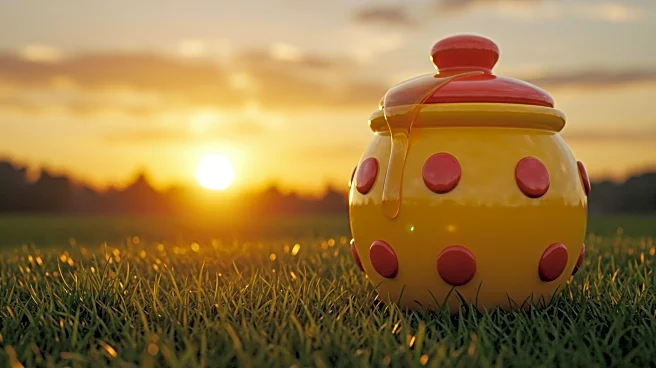What's Happening?
The third installment of the 'Winnie-the-Pooh: Blood and Honey' franchise is set to begin production in early 2026, with Richard Stanley, known for 'Color Out of Space,' taking on the role of screenwriter. The film is part of Jagged Edge Productions' horror series that reimagines A.A. Milne's classic characters in a slasher context. The first film, released in 2023, was a surprise hit, earning over $5 million globally on a budget of less than $50,000. The sequel, released in 2024, had a larger budget and continued the franchise's success. The upcoming third film promises a bigger budget and new characters from the original stories, such as Rabbit and the heffalumps.
Why It's Important?
The 'Winnie-the-Pooh: Blood and Honey' series represents a significant shift in independent horror film production, particularly in the U.K. By transforming beloved childhood characters into horror icons, the franchise has tapped into a unique cultural niche, attracting audiences and generating substantial box office returns. This approach not only revitalizes the horror genre but also challenges traditional perceptions of intellectual property use. The success of these films highlights the potential for low-budget productions to achieve commercial success, influencing future projects within the genre.
What's Next?
Production for 'Winnie-the-Pooh: Blood and Honey 3' is scheduled to start in early 2026, with expectations of a larger budget and expanded character roster. The film is part of Jagged Edge Productions' Twisted Childhood Universe, which includes other reimagined classics like 'Peter Pan's Neverland Nightmare' and 'Bambi: The Reckoning.' These characters are set to converge in a crossover feature titled 'Poohniverse: Monsters Assemble,' slated to begin filming in March. The continued expansion of this universe suggests ongoing interest and investment in the horror reimagining of childhood tales.
Beyond the Headlines
The 'Winnie-the-Pooh: Blood and Honey' franchise raises questions about the ethical implications of transforming beloved children's characters into horror figures. This trend reflects broader cultural shifts in how audiences engage with nostalgia and reinterpret familiar stories. Additionally, the franchise's success underscores the evolving landscape of intellectual property rights, as public domain characters are repurposed in innovative ways. These developments may influence future legal and cultural discussions surrounding the use of classic characters in modern media.













